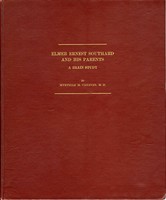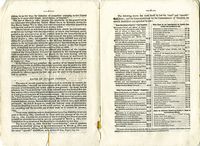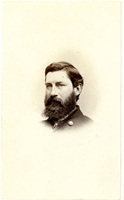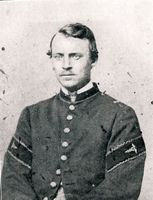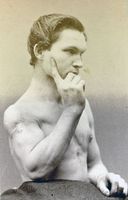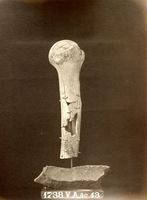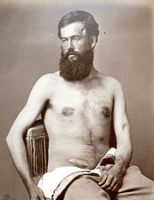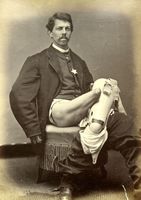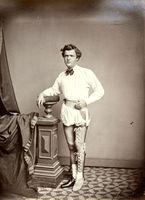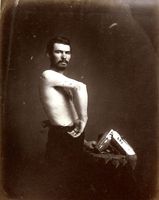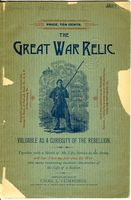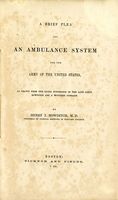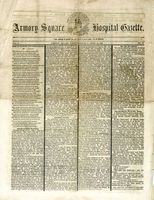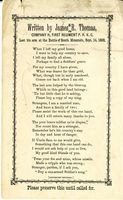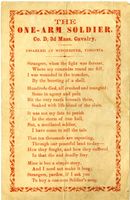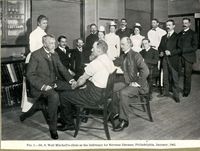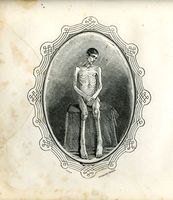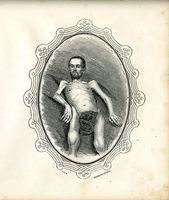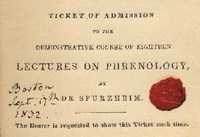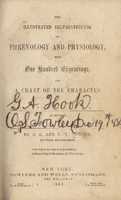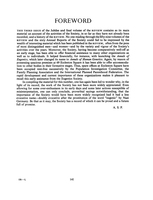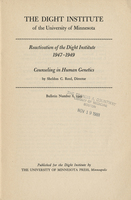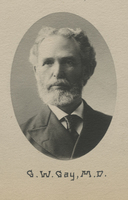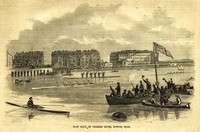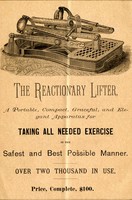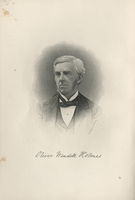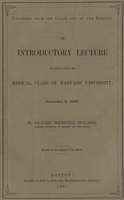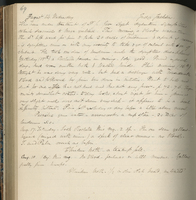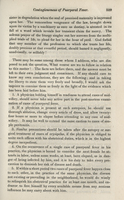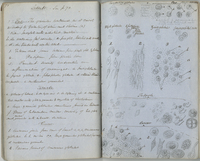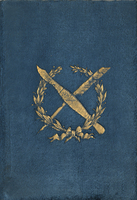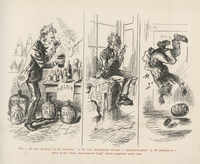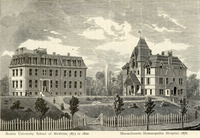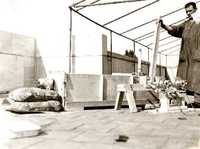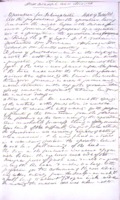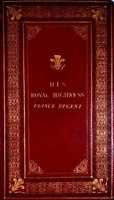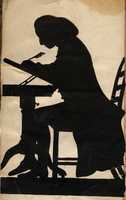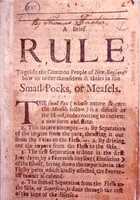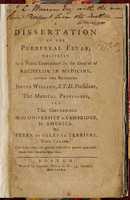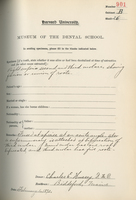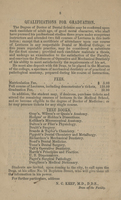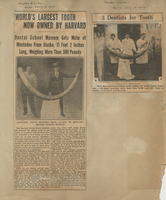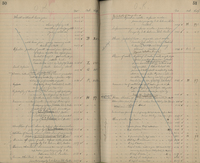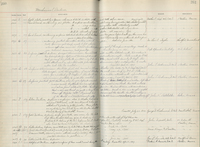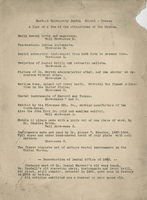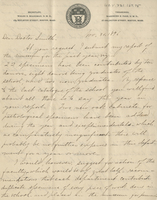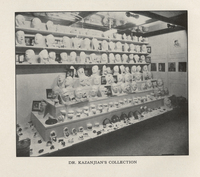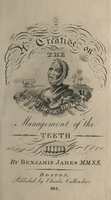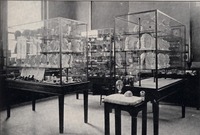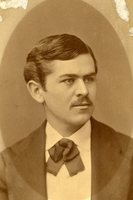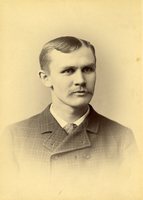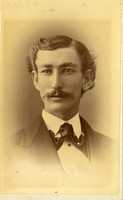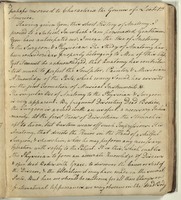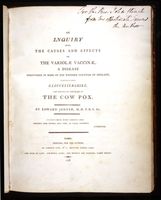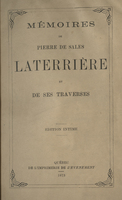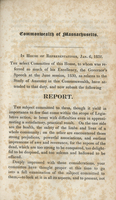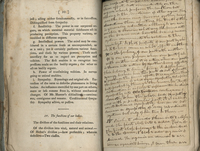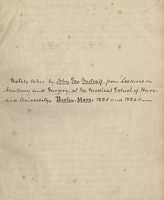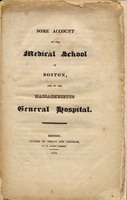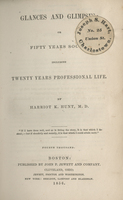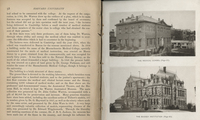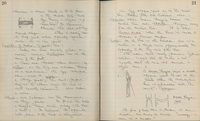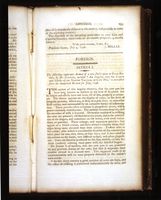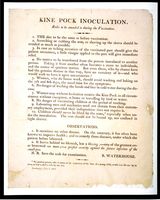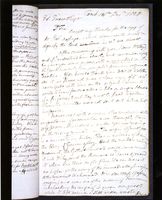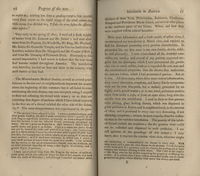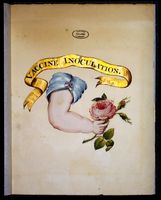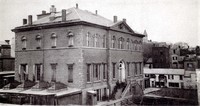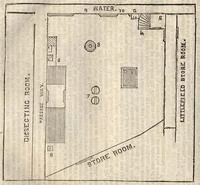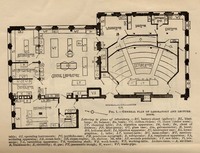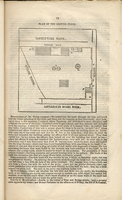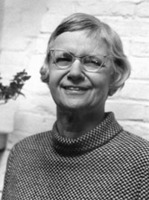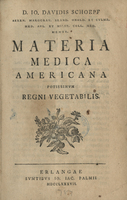Harvard Medical Library
Dublin Core
Title
Harvard Medical Library
Description
Rare books and journals from the collections of the Harvard Medical Library
Collection Items
"The soldiers' manual : a hand book of useful and reliable information, showing who are entitled to pensions, increase, bounty, pay, etc. ... "
The manual's introduction states:
There is no particular class of wounds, injuries, or diseases, for which pensions are granted. It depends not so much upon the wound, injury, or disease itself, as upon the disabled condition arising therefrom. A…
There is no particular class of wounds, injuries, or diseases, for which pensions are granted. It depends not so much upon the wound, injury, or disease itself, as upon the disabled condition arising therefrom. A…
Zabdiel Boylston Adams (1829-1902)
A graduate of Harvard Medical School in 1853, Zabdiel Boylston Adams enlisted in 1861, joining the 7th Massachusetts Volunteers as an assistant surgeon. He was later a captain with the 56th Massachusetts Volunteers. Adams was wounded at Orange…
"Camp near Falmouth, Va."
This drawing, from 1863, is part of a letter to Sargent's young son, George; he wrote, I shall try and get leave to come home one of these days. I hope you will be glad to see me when I come. If you are not glad, I shall be very sorry, I can tell…
"Charles B. Johnson, age 21, Hospital Steward, 130th Illinois Infantry Volunteers."
Charles B. Johnson, who served with the 130th and 77th Illinois regiments and became a physician after the war.
Late in life, he published a memoir of his experiences with particular attention to medical care and diseases of soldiers during the…
Late in life, he published a memoir of his experiences with particular attention to medical care and diseases of soldiers during the…
"Armory Square Hospital Gazette," Armory Square, Washington, D.C. Vol. 2, no. 64. Page 1.
The Armory Square Hospital (now the site of the National Air and Space Museum) was active from August, 1862, through September, 1865, and many of the worst casualties of the Civil War battlefields were treated there. The patients and a former nurse…
"The empty sleeve : or, The life and hardships of Henry H. Meacham, in the Union army / by himself."
Henry H. Meacham, a former carriage-maker in Massachusetts, joined the 32nd Massachusetts Volunteers; his arm was blown off by a shell near Petersburg in June, 1864. He printed and sold this pamphlet to make a living for himself and his ailing wife.…
"Private L. H. Parham"
This report to the Senate outlines the treatment of Union prisoners of war by the Confederate forces at Belle Isle.
"Your committee, therefore, are constrained to say that they can hardly avoid the conclusion, expressed by so many of our released…
"Your committee, therefore, are constrained to say that they can hardly avoid the conclusion, expressed by so many of our released…
Ticket of Admission to the Demonstrative Course of Eighteen Lectures on Phrenology
This ticket is inserted at the flyleaf of a copy of the third American edition of Spurzheim’s treatise, Phrenology, or the Doctrine of the Mental Phenomena (Boston: Marsh, Capen and Lyon, 1834) and was issued for his popular course of lectures…
The Illustrated Self-Instructor in Phrenology and Physiology
The Fowler brothers used The Illustrated Self-Instructor as both a popular handbook to phrenology and an advertising tool—the opening pages of each volume were used to record character assessments, such as this one for G. A. Hook, given by O.…
Inquiries into Human Faculty and its Development
In the notes to the introduction of this work, which assembles and revises his writings since the publication of Hereditary genius, Galton coins the neologism which gave its name to a movement: “That is, with questions bearing on what is termed…
A group of deaf-mute families from Maine
As part of his research on deafness, Alexander Graham Bell made statistical analyses of the deaf-mutes and determined that deafness was hereditary and that the number of intermarriages between deaf-mutes was high and growing. He concluded that…
Eugenical News
One of the early periodical publications devoted to eugenics, the Eugenical news started in 1916 and was, at various times, the official organ of the Eugenics Research Association and then the American Eugenics Society. Appearing monthly, the…
The Eugenics Review
The official organ for the Eugenics Society in England, The eugenics review first appeared in 1909 and was published continuously until this, its final volume under that title. In 1969, the publication was reformulated as the Journal of biosocial…
Reactivation of the Dight Institute, 1947-1949: Counseling in human genetics
Physician Charles F. Dight (1856-1938) was the first president of the Minnesota Eugenics Society and promoted the state’s adoption of a law for the sterilization of the feeble-minded and insane in 1925. He bequeathed his fortune to the…
Boat race on the Charles River
This illustration was printed in the edition of Ballou’s pictorial for June 20th and depicts the finish of a race of club boats on the Charles at Western Avenue a few days earlier. Holmes “who is very partial to this manly exercise”…
The health-lift reduced to a science
The Reactionary Lifter was sold by the Health-Lift Company of New York as a muscle exercise and strength-building device, suitable for men and women. A testimonial letter by Holmes appears in this marketing brochure: “My three months’…
Proceedings at the Delmonico's dinner
Following Holmes’ resignation of his professorship at Harvard, the physicians of New York hosted a public dinner in his honor. The dinner was held at Delmonico’s on April 12; the symbol of the event, embossed on the cover of the menu and…
Poem delivered at Dartmouth College
In 1838, Holmes was offered the professorship of anatomy and physiology at Dartmouth and held that position for two years before joining the faculty of Harvard. He was also asked by the New Hampshire Alpha chapter of Phi Beta Kappa to deliver a poem…
Teaching from the chair and at the bedside
At the opening of the term and the beginnings of debate over educational reform at the Medical School, Holmes gave this address to the students, partly in defense of the summer term of practical instruction over the formal lectures of the winter.…
Clinique de M. Louis
After studying medicine with James Jackson, Holmes continued his medical education in Europe, beginning in the summer of 1833. He studied with some of France’s most famous physicians, including Marjolin, Roux, Velpeau, and Andral; this is…
Memoranda of patients and cases treated
Little is known of Holmes’ private medical practice, but this volume of case notes derives from the period while he was on the Tremont School faculty and immediately following his research into the contagiousness of puerperal fever. The Judge…
Remarks on the case of Dr. Spurzheim
During the early 1830s, Holmes was enrolled at Harvard Medical School, but also sought tuition privately with Dr. James Jackson. Of Holmes, Jackson said to his son, “He can tell you much that is interesting. Do not mind his apparent frivolity and you…
The contagiousness of puerperal fever
Following his presentation on puerperal fever to the Boston Society for Medical Improvement, Holmes first published his findings in this journal in April 1843. The article was also reprinted in pamphlet form. The passage displayed here contains…
Homϗpathy, and its kindred delusions
Holmes delivered this critical address on homeopathy to the Boston Society for the Diffusion of Useful Knowledge on February 16, 1842, and then published it with a companion lecture, "Medical delusions of the past," later that spring. Although Holmes…
Medical directions written for Governor Winthrop
English physician Edward Stafford compiled a book of basic recipes for medical disorders such as madness, vertigo, and the king’s evil for John Winthrop (1588-1649), the governor of Massachusetts. At the request of Robert C. Winthrop, president…
Lectures on anatomy and physiology at Harvard Medical School
After receiving his medical degree from Harvard, Holmes was granted the Boylston Prize in 1836 for his essay responding to the question “How far are the external means of exploring the condition of internal organs to be considered useful and…
Menu and program from Delmonico's dinner
Following Holmes’ resignation of his professorship at Harvard, the physicians of New York hosted a public dinner in his honor. The dinner was held at Delmonico’s on April 12; the symbol of the event, embossed on the cover of the menu and…
Hay fever
Comic illustrator Augustus Hoppin chronicles the travails of Mr. A. Wiper Weeps as he suffers from an attack of hay fever. In the plate on the right, both allopathy and homeopathy are seen as useless to him. Only a trip in a hot-air balloon for the…
Boston University School of Medicine and the Massachusetts Homeopathic Hospital, circa 1876
Engraving of Boston University School of Medicine and the neighboring Massachusetts Homeopathic Hospital around 1876.
Boston University School of Medicine and the Massachusetts Homeopathic Hospital, circa 1892
Engraving of Boston University School of Medicine and the neighboring Massachusetts Homeopathic Hospital around 1892.
Philip Drinker first demonstrating the safety and effectiveness of an artificial respirator
Original notes on early experiments leading to the development of the iron lung
Museum Catalog Entries
Each specimen in the Dental Museum was assigned a serial number and cabinet and shelf location. Sheets like these were used to record information about the item and its acquisition and were then bound together into formal catalogs.
The Mirror
From 1912 until 1943, the Dental School had its own yearbook, The Mirror, analogous to the Medical School's yearbook, The Aesculapiad. The 1925 edition describes the Dental Museum and its holdings and includes photographs of the interior and the…
Announcement of the Dental School of Harvard University, Session 1868-69
This first annual catalog from the Dental School lists the faculty members and outlines the course of instruction. Among the qualifications for graduation may be seen the earliest reference to the existence of the Dental Museum: "He must also deposit…
World's Largest Tooth Now Owned by Harvard
In 1929, Boston newspapers ran some unusual articles on the latest acquisition of the Dental Museum. This was no human Tooth, but a mastodon's tusk estimated to be 50,000 years old. Over 11 feet long and weighing 300 pounds, it was one of the…
The Museum of the Harvard Dental School
George Howard Monks, the professor of oral surgery in the Dental School, presented an overview of the Dental Museum and its holdings to the Boston Medical History Club in March, 1925. The paper was then printed in the Harvard Alumni Bulletin and…
Catalogue of the Specimens in the Museum of the Harvard Dental School
This volume functioned as an accession book for specimens acquired by the Museum through 1896. Items were assigned an ordinal number and shelf location as received, and the information was later transcribed into the formal catalog. The items listed…
Catalog entry for Oliver Wendell Holmes denture
This version of the Museum's catalog was in use from the 1890s through 1907.
Here among the entries for items of mechanical dentistry are specimens 1562 and 1565
Here among the entries for items of mechanical dentistry are specimens 1562 and 1565
A List of a Few of the Attractions of the Museum
A brief overview of some of the highlights of the Dental Museum collection indicates the scope and breadth of the collection.
Facial Moulages
During World War I, Dr. Varaztad H. Kazanjian (1879-1974) used his surgical skills to treat the soldiers severely disfigured during combat. In 1915, he was appointed chief dental officer of the First Harvard Unit, organized to serve overseas with the…
A Treatise on the Management of the Teeth
In addition to the collection housed in the library of the Dental School, there were also books, pamphlets, prints and pictures preserved in the Dental Museum, including this early text on Dentistry. The title-page engraving shows an inferior denture…
The Harvard Dental School Museum
The only surviving photographs of the interior of the Dental Museum are found in issues of The Mirror, the yearbook of the Dental School, and Richard Locke Hapgood's published History of the Harvard Dental School (1930). This photograph is from the…
Charles Wilson
Dr. Charles Wilson (1842-1912) was the curator of the Museum from 1881 until 1891. Wilson was also part of the class of 1870.
Waldo E. Boardman
Dr. Waldo E. Boardman (1851-1922) was the Museum's third curator, serving over thirty years, from 1891 until 1922. Boardman was also part of the class of 1886.
A Discourse upon the Institution of Medical Schools in America
The first book to be published on medical education in America was written by Dr. John Morgan, who founded the Medical Department of the University of Pennsylvania, the nation’s first medical school, in 1765. This particular copy is notable for…
Lectures upon Anatomy
Partially in the handwriting of Dr. John Warren, this volume of lecture notes, beginning on December 10, 1783, contains the earliest surviving record of teaching at Harvard Medical School. The lectures were delivered in Harvard Hall, on the campus in…
An Inquiry into the Causes and Effects of the Variolæ Vaccinæ
The first edition of Edward Jenner's publication contains his evidence that inoculation with cowpox vaccine matter could be a preventive against smallpox. Pages 32-35 concern Case XVII, an eight-year-old named James Phipps, who was inoculated with…
Mémoires de la P. de Sales Laterrière et de Ses Traverses
Pierre Laterrière, who first studied medicine under M. de la Rochambeau in France, came to Harvard and received the degree of Bachelor of Medicine in 1789. He went on to practice medicine in Canada. Laterrière’s Mémoires,…
Report of the Select Committee of the House of Representatives ... Legalizing the Study of Anatomy
This state report provided key arguments for the repeal of the 1815 Act to Protect the Sepulchres of the Dead by the Massachusetts Legislature and so legalized dissection of human bodies for anatomical study. Dr. John Collins Warren, stressing the…
A Syllabus of the Lectures Delivered at the Massachusetts Medical College to the Medical Students of Harvard University
Harvard’s first professor of clinical medicine, James Jackson, found that the time spent with his students on the wards at Massachusetts General Hospital detracted from his formal lecturing, and so he published these brief notes of his lectures…
Medical Lectures
Dr. John George Metcalf of Mendon attended Harvard Medical School and used this notebook during the lectures of Drs. John Collins Warren, Jacob Bigelow, and Walter Channing. The notebook also served as Metcalf’s diary, and his account of life at…
Some Account of the Medical School in Boston, and of the Massachusetts General Hospital
This brief promotional pamphlet describes the Harvard Medical School at its Mason Street location and also the clinical and surgical opportunities offered by the new Massachusetts General Hospital. The school and hospital both at this period would…
Glances and Glimpses, or Fifty Years Social, Including Twenty Years Professional Life
Harriot Kesia Hunt
Medical Education : New Professorships in the Medical Department of Harvard University
The challenge to reform American medical education and bring it closer to the higher standards current in Europe started even before this editorial appeared in the Boston Medical and Surgical Journal. James C. White, a member of the faculty of the…
An Introductory Lecture Delivered before the Medical Class of Harvard University
Introductory lectures to new medical students were customary at the opening of each academic year and often printed in pamphlet form or, as here, in the pages of a medical journal. James C. White cautions the students against specializing too early…
Course Schedule
As part of the reform movement at Harvard, the recommended medical degree course was extended from three years to four in 1880. Students could still finish the requirements for an M.D. in three years, and anyone who completed a fourth was granted the…
Harvard and Its Surroundings
This 19th century guidebook to Harvard University describes the current—and overcrowded—conditions of the Medical School on North Grove Street as well as some of the collections of the Warren Anatomical Museum. A building on Cambridge Street was…
Student Lecture Notes on Anatomy
Even the most renowned of neurosurgeons was once a first-year medical student, as illustrated by this volume of Harvey Cushing's notes on the anatomical lectures of Thomas Dwight. The Harvard Medical School student at this period attended anatomy…
Analytical review of Jenner's "An Inquiry..."
This anonymous article, appearing in December 1798, is the first American publication to discuss the work of Edward Jenner.
Letter from Benjamin Waterhouse to Edward Everett
In the 1820s, years after his initial vaccination experiments, Benjamin Waterhouse remained closely involved with the subject. He used this letterbook to keep copies of correspondence with President John Quincy Adams, Daniel Webster, and other…
A Prospect of Exterminating the Small Pox, Part II
In this companion pamphlet to his original publication just two years earlier, Waterhouse recounts the popularity of smallpox inoculation following his experiments, as well as the consequent appearance of spurious cowpox matter which caused a…
A Collection of Papers Relative to the Transactions of the Town of Milton
The Selectmen of Milton, Massachusetts, assembled, published, and distributed this assortment of documents to prove the efficacy of vaccination against smallpox and encourage towns throughout the state to establish vaccination programs. Through the…
Vaccine Inoculation
This unusual illustration of a child's arm with the distinctive mark of inoculation was inserted in Benjamin Waterhouse's own copy of The Origin of the Vaccine Inoculation (London : printed by D. N. Shury, 1801). The Origin was Edward Jenner's…
The North Grove Street Building
In 1847, Harvard Medical School erected a new building, on North Grove Street, adjoining Massachusetts General Hospital, on land donated by Dr. George Parkman—whose body would all too soon be found buried beneath it. The school building itself…
The Parkman Murder : Trial of Prof. John W. Webster for the Murder of Dr. George Parkman
While few early photographs exist of the Harvard Medical School building on North Grove Street, considerable information about the structure and its interior can be found, ironically, in the published transcripts of the 1850 murder trial of John W.…
Description of the Physiological Laboratory
A large proportion of the new building on Boylston Street was devoted to laboratory space with adequate natural light. The Physiological Laboratory (“… intended to serve primarily as a laboratory of research, and secondarily as an…
Trial of Professor John W. Webster for the Murder of Doctor George Parkman
While few early photographs exist of the Harvard Medical School building on North Grove Street, considerable information about the structure and its interior can be found, ironically, in the published transcripts of the 1850 murder trial of John W.…
Materia medica Americana potissimum regni vegetabilis
This first account of American plants and their medicinal uses was, oddly enough, published in Germany. Johann David Schöpf was a military surgeon who came to the country during the Revolutionary War and later traveled through New York,…
The physician's pulse-watch
English physician Sir John Floyer invented a watch to measure the rate of the pulse and here translates some relevant portions of the Specimen medicinae Sinicae("The Chinese art of Feeling the Pulse is describ'd; and the Imitation of their Practice…
The principles and practice of medicine
In the first edition of his monumental textbook, Sir William Osler advocates the use of acupuncture for sciatica and, as here, lumbago "in acute cases, the most efficient treatment…. I can corroborate fully the statements of [Sydney] Ringer,…

